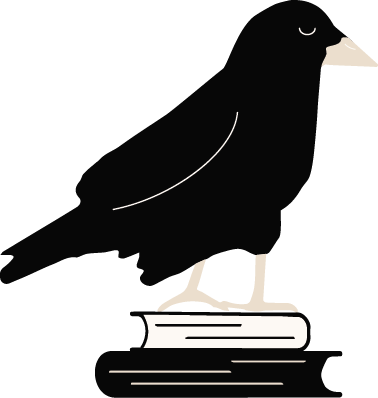
Over the past few years, we’ve seen more and more conversation around sensitivity and authenticity reading. Hiring a sensitivity reader is becoming much more common, but writers often aren’t sure what they actually need to be on the lookout for. Today, I’m going to talk about Jewish sensitivity reading.
What is Jewish sensitivity reading?
Simply put, Jewish sensitivity reading is reviewing a text for how it uses Jewish characters, themes, or tropes. This can be intentional, like when a writer includes specifically Jewish (or, in fantasy, Judaism-based) characters. This can also be unintentional, like when fantasy writers accidentally use deeply-ingrained antisemitic tropes and wind up with greedy, hook-nosed goblins who run the banks.
When I complete a sensitivity read for a writer, I look for both intentional and unintentional connections to Judaism, and I review whether these inclusions are done in a sensitive or authentic way. I leave margin comments to give brief feedback, and I provide more extensive feedback, if necessary, in a brief written review. I let my writers know what they’ve done well, and I explain where they could adjust things to be more authentic or avoid accidentally relying on antisemitic tropes.
Is it an “authenticity” or “sensitivity” read?
I’ve seen this service referred to in both ways. Crystal Shelley, an outstanding editor and a pillar of the current conscious language movement with her vast list of free resources and her invaluable “Conscious Language Toolkit,” explores her preference for “authenticity” in her article “Sensitivity Reading 101.” She makes fantastic points in this article, such as the more positive connotations for writers of “authenticity read” and the fact that she approaches the service from her own authentic experiences.
Personally, I choose to use “sensitivity read.” I think this works best for my service because Jewish sensitivity reading stretches beyond representing Jewish characters authentically. Because of the way that antisemitic tropes have intertwined with fairy tale tropes over the centuries, a lot of fantasy tropes are unintentionally antisemitic. Looking for antisemitic connections in fantasy creatures does not, for me, feel like I’m reading for authenticity, but it’s still absolutely part of what I’m providing. This is why, for me, “sensitivity reading” works better.
Antisemitism is deeply ingrained in fantasy.
While the Gringotts goblins in Harry Potter are a particularly egregious example of a deeply antisemitic greedy, hook-nosed, untrustworthy fantasy race, we also see antisemitic tropes in hags in video games who steal babies and hoard money; vampire cabals with vast amounts of money who control world leaders from the shadows; hook-nosed, pointy-hatted fairy tale witches who bake children into bread; evil lizard-people in the underworld; and more. My article “Antisemitism in Fantasy and Fairy Tales” explores all of this further.
I once heard someone say that every fantasy book should have a sensitivity read for antisemitism, racism, and ableism due to how deeply ingrained many of these tropes are. (One of my favourite resources is “Ridding Your Monsters of Ableism,” which I discuss in my article ��“What Makes a Villain: Part Two.”) While I recognise that it’s not realistic for every fantasy writer to have multiple sensitivity reads, I think it is important to learn about the origins of fantasy tropes, because many of them originate in harmful stereotypes.
Does your book need a Jewish sensitivity read?
I’ll address the easiest part of this first. Are you a non-Jewish writer with significant Jewish characters in your book? Are you writing about Judaism-related events, like the Holocaust? Then yeah, you should hire a Jewish sensitivity reader to make sure you’re getting your details right. (This is the “authenticity” part.)
While, as I wrote above, it’s not realistic to expect every fantasy book to have multiple sensitivity reads, I would encourage every fantasy writer to consider the origins of the tropes and races they’re using. Are your goblins inherently greedy? Do your witches kidnap innocent children or perform blood rituals using innocent victims? Are your hook-nosed vampires controlling the world like puppeteers using their vast wealth? Does the word “cabal” appear anywhere in your story?
If your answer to any of these questions was “yes,” you might want to consider a Jewish sensitivity reader. In my time as a Jewish editor and sensitivity reader, I have helped clients identify when their vampire cabals that controlled the world had too many connections to antisemitic tropes to be okay—and then worked with them to adjust these characters so they used fewer Jewish stereotypes, so the vampires weren’t controlling world leaders with their money but rather working in politics though their charisma and logic. I’ve highlighted unintended connections to Jewish holidays or history. I’ve even helped fantasy writers strengthen intentional biblical allusions.
I have also advised writers with explicitly Jewish characters on how to make them as authentic as possible. When one writer wanted to include a Jewish character but was nervous about getting a holiday celebration wrong, I explained what traditions and festivities would typically occur. I was able to explain to another writer why “Jewish American Princess��” was problematic—both as a term and as a stereotype.
Does sensitivity reading really matter?
If you’ve gotten this far, your answer is presumably “yes.” But I want to emphasise the harm that can be done by the perpetuation of harmful tropes, even in fiction. In the world today, antisemitism is skyrocketing. People on all sides of the political spectrum are accusing Jews of using their money to control the media. Belief in conspiracy theories—which often link to the same antisemitic tropes that we see in fantasy races—is leading to more Jewish individuals, workplaces, and organisations being attacked and vandalized.
It’s a scary time to be Jewish, and it is exhausting to see antisemitic tropes included in books by well-meaning authors.
Honestly, declining a sensitivity read is probably not going to ruin your career. But think what a gift it is to yourself and to your readers to make sure that your characters feel authentic, that your book is free from stereotypes that might do harm.
If your book could benefit from a Jewish sensitivity read, Rookwood Editing is here to help. Get in touch today to make your book the best it can be!








